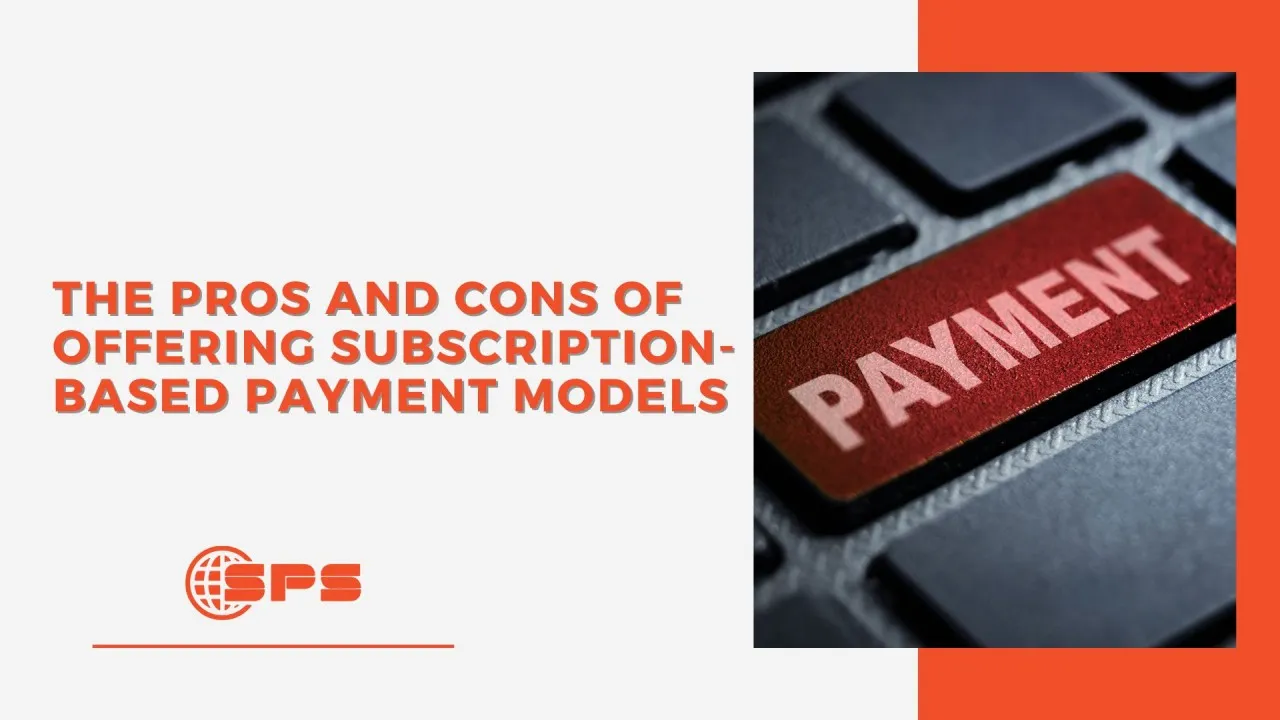The Pros and Cons of Offering Subscription-Based Payment Models
In recent years, subscription-based payment models have gained popularity across various industries, from software services (SaaS) to subscription boxes and even fitness centers. This model offers businesses a steady stream of recurring revenue, while providing customers with convenient access to products or services on a regular basis. However, while the subscription model offers many benefits, it also comes with its own set of challenges. In this article, we will explore the pros and cons of offering subscription-based payment models to help you determine if this approach is right for your business
Pros of Subscription-Based Payment Models
1. Steady Revenue Stream
One of the most significant advantages of a subscription-based payment model is the predictable and recurring revenue it generates. Instead of relying on one-time purchases or seasonal spikes, businesses can count on a steady flow of income, which makes financial planning and budgeting much easier.
Example: A software-as-a-service (SaaS) company that charges monthly subscriptions for access to its platform can forecast its revenue more accurately, helping with budgeting, growth projections, and long-term planning.
2. Increased Customer Lifetime Value (CLV)
Subscription models can significantly increase the lifetime value of a customer. When customers subscribe to a service or product, they often continue paying for the long-term, leading to higher revenue per customer over time. This is particularly beneficial for businesses that have low customer churn rates.
Example: Streaming services like Netflix or Spotify thrive on subscriptions because they have customers locked into monthly payments, increasing the average CLV while maintaining long-term customer relationships.
3. Customer Loyalty and Retention
Subscription-based models typically foster customer loyalty by offering customers access to products or services on an ongoing basis. When a customer feels like they are getting value for their money regularly, they are more likely to stay subscribed and renew their membership.
Example: Subscription boxes like Birchbox or meal kit delivery services like HelloFresh encourage repeat purchases by offering curated, personalized products that arrive regularly. Customers appreciate the convenience and are often reluctant to cancel.
4. Lower Customer Acquisition Costs
Once a customer subscribes, you’re less likely to lose them quickly, which can reduce the need for expensive customer acquisition strategies. Instead of constantly chasing new customers, businesses can focus on retaining and upselling existing ones.
Example: A gym membership business, for instance, benefits from lower marketing costs by focusing on keeping existing members happy through incentives, offering extra services, or providing discounts for long-term members.
Cons of Subscription-Based Payment Models
1. Customer Churn
While subscription models help with customer retention, they also come with the challenge of customer churn, which refers to customers cancelling or failing to renew their subscriptions. Even a small percentage of churn can impact the long-term revenue of a business.
Example: If a SaaS company experiences a 10% churn rate, it may need to acquire 10% more customers each month just to maintain its current revenue, increasing customer acquisition costs.
2. Initial Setup and Management Complexity
Setting up a subscription model involves more than just charging a recurring fee. You’ll need to invest in a reliable payment processing system, develop clear subscription terms, and handle issues like billing errors, customer support, and cancellations.
Example: A business offering subscriptions for physical goods must manage inventory, shipping logistics, and customer complaints about delivery times. It requires a robust backend infrastructure to handle these complexities.
3. Potential for Decreased Profit Margins
Although subscription models can provide a steady revenue stream, the profit margins may decrease if the customer churn rate is high, or if the costs associated with providing the service are too great. Businesses may find themselves spending heavily to maintain a subscription base without seeing significant profit growth.
Example: A streaming service may need to continuously invest in content creation or licensing deals, which could reduce its profit margins, even though the business generates substantial revenue from subscriptions.
4. Dependence on Customer Retention
Subscription models rely heavily on maintaining customer satisfaction and keeping customers engaged over time. If your business fails to innovate or deliver value to customers consistently, subscribers may decide to cancel their subscriptions, leading to revenue loss.
Example: If a fitness app fails to regularly update its features or provide new value to its users, subscribers may become bored or disengaged, opting to cancel their subscription.
Is the Subscription-Based Model Right for Your Business?
The subscription model isn’t one-size-fits-all. It works well for businesses that can offer consistent value to customers and have a product or service that lends itself to regular usage. However, it’s important to weigh the pros and cons before making the switch.
Here are a few questions to consider:
- Can your product or service be delivered on a recurring basis? If you’re offering a service or product that customers use frequently, a subscription model may be a great fit.
- Can you retain customers over time? If you have a good strategy for keeping customers engaged and satisfied, subscription models can significantly boost your revenue.
- Are you ready for the operational challenges? Managing subscriptions requires proper systems for billing, customer service, and delivery.
If your business is ready to embrace the subscription model, Stellar Payments Systems can help you set up seamless, secure, and cost-effective payment solutions to manage recurring payments and ensure your customers have a smooth experience every time.
Conclusion: Weighing the Pros and Cons
The subscription-based payment model offers numerous benefits, such as predictable revenue, increased customer loyalty, and lower acquisition costs. However, it also comes with challenges like customer churn, increased operational complexity, and potentially lower profit margins. Understanding these factors can help you determine if this model is right for your business.
By partnering with Stellar Payments Systems, you can simplify your subscription management and ensure that payment processing, invoicing, and customer retention are handled efficiently, so you can focus on growing your business.
Learn More About Stellar Payments Systems

